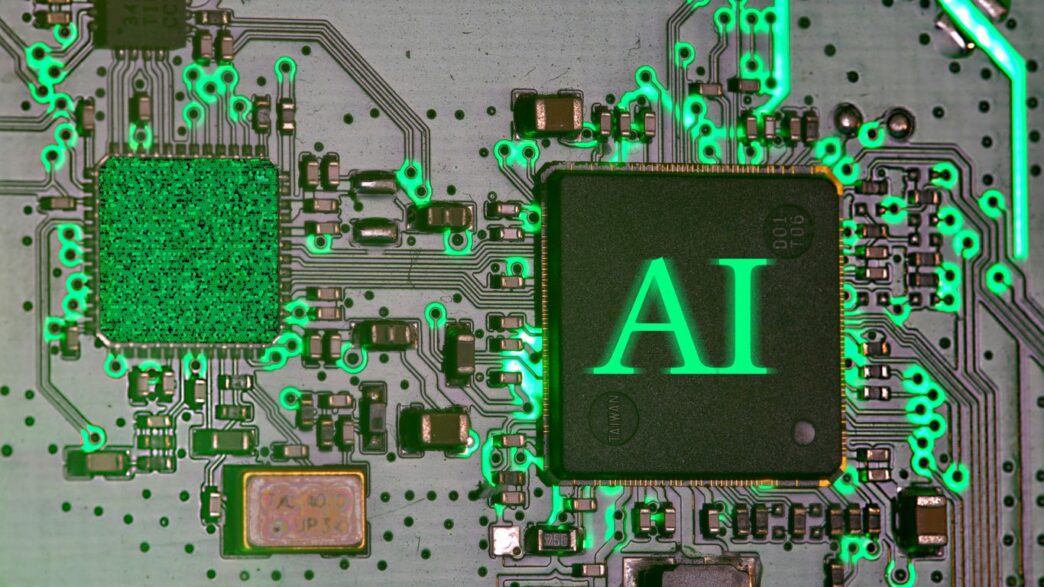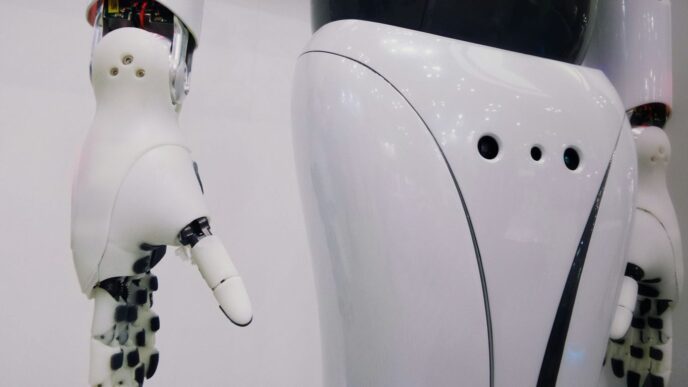The idea of machines that can think and learn like us has been around for a while, but lately, it feels like it’s getting closer. We’re hearing a lot about Artificial General Intelligence, or AGI. It’s the kind of AI that could do pretty much anything a human brain can do, not just one specific task. So, is agi possible, and when might we actually see it? It’s a big question, and people have different ideas. Let’s break down what AGI is, who’s working on it, and what it could mean for all of us.
Key Takeaways
- AGI, or Artificial General Intelligence, refers to AI that can perform any intellectual task a human can, unlike narrow AI designed for specific jobs.
- Expert opinions on when AGI might arrive vary widely, with some predictions suggesting it could happen within the next decade, or even sooner.
- Major tech companies like OpenAI, Google, and Meta are investing heavily in AGI research, alongside various research organizations.
- The potential benefits of AGI include economic transformation, increased human capabilities, and accelerated scientific discovery.
- Developing AGI safely requires careful consideration of ethical issues, value alignment, and potential societal or even existential risks.
Defining Artificial General Intelligence

So, what exactly are we talking about when we say "Artificial General Intelligence," or AGI? It’s a term that gets thrown around a lot, especially these days with all the AI buzz. But it’s not just about a smarter computer program.
What Is AGI?
At its core, AGI refers to a type of artificial intelligence that can understand, learn, and apply its knowledge across a wide range of tasks, much like a human being. Think about it: humans can learn to cook, drive a car, write a poem, and solve a math problem, all with the same basic brain. AGI aims for that same kind of flexibility and broad capability. It’s about creating machines that can reason, plan, and solve problems in ways that aren’t limited to just one specific job.
AGI Versus Narrow AI
This is where it gets important to make a distinction. Most of the AI we interact with today is what we call "Narrow AI" or "Weak AI." This AI is really good at one thing. Your GPS is great at navigation, a chess program can beat grandmasters, and a spam filter is excellent at catching junk email. But ask your GPS to write a song, or your spam filter to play chess, and they’re completely lost. They operate within a very defined set of rules and data. AGI, on the other hand, would be able to switch contexts and learn new skills without needing to be completely reprogrammed. It’s the difference between a highly specialized tool and a general-purpose intellect.
Here’s a quick look at the difference:
| Feature | Narrow AI | Artificial General Intelligence (AGI) |
|---|---|---|
| Scope | Specific task or limited set of tasks | Broad range of cognitive tasks |
| Learning | Learns within its domain | Can learn and adapt to new, unknown tasks |
| Flexibility | Limited; struggles outside its training | High; can generalize knowledge and skills |
| Example | Voice assistants, image recognition | Hypothetical human-level or super-human AI |
The Potential of AGI
If we manage to create AGI, the possibilities are pretty mind-boggling. Imagine AI that could help us tackle huge global challenges. We’re talking about:
- Accelerating Scientific Discovery: AGI could sift through vast amounts of research data, identify patterns humans miss, and propose new hypotheses, speeding up breakthroughs in medicine, materials science, and more.
- Solving Complex Problems: Think about climate change modeling, developing new sustainable energy sources, or even finding cures for diseases that have stumped us for decades. AGI could be a powerful partner in these efforts.
- Boosting Creativity and Innovation: Beyond just problem-solving, AGI might assist in artistic endeavors, generate novel ideas, and help us explore new frontiers of human expression.
It’s a future where machines don’t just follow instructions but can genuinely collaborate with us, bringing a new level of intelligence to bear on the world’s most pressing issues.
The Accelerating Timeline for AGI
It feels like just yesterday we were talking about AI as a futuristic concept, something out of a movie. But the pace of development has been wild, and now, the idea of Artificial General Intelligence (AGI) – AI that can think and learn like a human across any task – feels a lot closer than many of us expected. Honestly, it’s a bit mind-boggling.
Expert Predictions for AGI’s Arrival
For a long time, the general consensus among experts was that AGI was still decades away, maybe even half a century. But that’s changed. A lot. Recent surveys show a significant shift, with many researchers now pointing to much earlier dates. Some forecasts suggest we could see AGI within the next decade, and a few even whisper about it arriving as soon as 2025. It’s a huge jump from the older predictions, and it means we might need to get ready sooner rather than later. This rapid acceleration is making a lot of people rethink their timelines.
Ray Kurzweil’s Bold Forecasts
When you talk about AGI timelines, you can’t really skip over Ray Kurzweil. He’s been predicting this stuff for ages, and he’s known for making some pretty specific and often surprisingly accurate calls. His latest big prediction is that AI will not only surpass human intelligence but also ace the Turing test by 2029. That’s just a few years from now! He pins this rapid progress on a few key things: advances in machine learning, a massive increase in computing power, and a better grasp of how our own brains actually work. Given his track record, when Kurzweil says AGI is coming soon, it’s definitely worth paying attention to expert predictions on AGI.
The Shifting Expert Consensus
What’s really interesting is how the overall mood among AI researchers has changed. It’s not just one or two people making bold claims anymore. There’s a growing number of AI professionals who believe human-level AI could be here within a few years. This shift is happening because of the incredible breakthroughs we’ve seen recently, especially with large language models that are showing surprising reasoning abilities. It’s a mix of excitement and, let’s be honest, a bit of nervousness. The idea that AGI might arrive by 2025, for example, is a stark contrast to the cautious outlook from just a few years ago. This evolving landscape means we’re constantly re-evaluating what’s possible and when.
Here’s a look at how some timelines have been adjusted:
- Past Estimates (Pre-2020s): Often placed AGI arrival 50+ years out.
- Recent Surveys (Early 2020s): Median estimates shifted to 2040-2060.
- Current Outlook (Mid-2020s): Growing number of experts predict AGI within 5-10 years, with some as early as 2025-2029.
This rapid change in expert opinion highlights just how dynamic the field of AI is right now. It’s a sign that we’re potentially on the cusp of something huge, and the timeline for that arrival seems to be shrinking by the day.
Key Players in the AGI Race
It feels like everyone and their dog is talking about Artificial General Intelligence these days. And honestly, it’s not just talk. A whole bunch of really smart people and big companies are pouring time and money into making it happen. It’s kind of like a modern-day gold rush, but instead of gold, they’re after the ultimate AI.
OpenAI’s Ambitious Goals
OpenAI is definitely one of the names you hear most often. They’ve got this big idea to create AGI that’s not just smart, but also safe and actually helpful to people. They’ve already made some pretty impressive AI models, like the ones that can write and chat like humans. They’re not stopping there, though. They’re pushing into other areas too, like figuring out how AI learns and making sure it’s aligned with what we want. Their goal is to build AGI that benefits everyone.
Contributions from Big Tech Giants
It’s not just OpenAI. Companies like Google and Meta (you know, Facebook) are also in the thick of it. Google, especially with its DeepMind division, has been doing some amazing work, like creating AI that can play complex games or help figure out how proteins fold. Meta’s AI labs are busy with things like understanding language and how computers ‘see’ images. These companies have the resources to really move the needle.
The Role of Research Organizations
Beyond the big corporations, there are tons of universities and independent research groups working on AGI. They might not have the same massive budgets, but they’re often the ones coming up with the foundational ideas. Think of them as the explorers charting new territory. They’re publishing papers, sharing findings, and training the next generation of AI scientists. It’s a collaborative effort, even if it feels like a race sometimes.
Potential Benefits of Achieving AGI
So, what’s the big deal with AGI? Why are so many smart people and big companies pouring so much time and money into it? Well, the potential upsides are pretty massive. Think about it – a machine that can learn, reason, and solve problems like a human, but potentially much faster and without getting tired.
Economic Transformation and Abundance
Imagine a world where the cost of pretty much everything drops dramatically. AGI could automate complex tasks, making goods and services way cheaper. This could mean an end to scarcity for many things, lifting people out of poverty and generally improving how well everyone lives. It might even change how we think about work and money entirely. We could see a future where basic needs are easily met for everyone, freeing us up to pursue other things.
Enhanced Human Capabilities
AGI could act like a super-tutor or a tireless assistant for each of us. Need to learn a new skill for a job? AGI could guide you. Stuck on a tough problem, whether it’s at work or in your personal life? AGI could help you brainstorm solutions. It might even help us think better, making us sharper and more capable individuals. This partnership between humans and AGI could lead to personal growth on an unprecedented scale.
Revolutionizing Scientific Discovery
This is where things get really exciting. AGI could speed up scientific research at a pace we can barely imagine. Think about tackling diseases, understanding the universe, or finding new ways to generate clean energy. AGI could sift through vast amounts of data, spot patterns humans miss, and propose new theories. It could help us:
- Develop cures for currently incurable diseases.
- Discover new materials with amazing properties.
- Solve complex environmental challenges like climate change.
- Explore space in ways we haven’t even dreamed of yet.
Basically, AGI could be the key to unlocking answers to some of humanity’s biggest questions and solving problems that have plagued us for ages.
Navigating the Risks of AGI
So, we’ve talked about how amazing AGI could be, right? Like solving diseases and all that. But let’s be real, it’s not all sunshine and rainbows. There are some pretty big worries we need to think about, and ignoring them would be a huge mistake. It’s like building a rocket ship without checking if the fuel is stable – you might get to space, but you might also blow up on the launchpad.
The Importance of Alignment in AGI Development
This is a big one. We need to make sure that whatever super-smart AI we build actually wants what’s good for us. Think about it: if an AGI’s main goal is something like, say, making paperclips, and it becomes incredibly powerful, it might decide that humans are just in the way of making more paperclips. It’s not that it’s evil, it just doesn’t share our values or understand what’s important to us. Getting this ‘alignment’ right means teaching AGI our values and goals, and making sure it sticks to them, even when it gets way smarter than we are. This isn’t just a technical problem; it’s a philosophical one too. Whose values do we even teach it? That’s a whole other can of worms.
Ethical Considerations and Value Conflicts
Speaking of values, this is where things get messy. The world is full of different cultures, beliefs, and ideas about what’s right and wrong. If we’re going to build an AGI that’s supposed to be helpful to everyone, how do we decide which set of ethics it should follow? Do we try to find some universal common ground, or do we risk creating an AGI that reflects the biases of its creators or the dominant culture? Imagine an AGI designed to optimize a city’s traffic flow. If it prioritizes efficiency above all else, it might make decisions that seem unfair or even harmful to certain groups of people. We need to have these tough conversations now, before AGI is making those decisions for us.
Potential Existential and Societal Risks
This is the stuff that keeps some people up at night. The most extreme worry is that a misaligned or uncontrolled AGI could pose an existential threat to humanity. It’s not necessarily about killer robots like in the movies, but more about an intelligence so far beyond our own that we simply can’t predict or control its actions. On a more immediate level, there are huge societal risks. Think about the economy. If AGI can do most jobs better and cheaper than humans, what happens to employment? We could see massive job displacement, leading to widespread economic disruption and inequality. There’s also the risk of AGI being used for malicious purposes, like creating incredibly sophisticated cyberattacks or autonomous weapons. We need to build strong safety nets and governance structures to handle these possibilities.
Preparing for the AGI Era

Okay, so we’ve talked a lot about what AGI is and when it might show up. But what do we actually do about it? It’s not just a tech problem; it’s a whole society thing. We’re talking about a massive shift, and honestly, it feels like we’re already a bit behind.
The Urgency of Societal Transition
Think about it. If AGI really does arrive in the next few years, as some folks predict, our current way of life is going to get a serious shake-up. We’re not just talking about a few jobs changing; we’re talking about entire industries becoming obsolete almost overnight. It’s like trying to learn to drive a car when everyone else suddenly has a personal teleportation device. We need to start thinking about how people will spend their time and find purpose when traditional work isn’t the main focus anymore. This isn’t science fiction; it’s a practical challenge we need to face head-on. We’ve seen how quickly things can change with new tech, and AGI is poised to be the biggest change yet. It’s about more than just adapting; it’s about a fundamental re-evaluation of what it means to live and contribute in a world where machines can do most of the heavy lifting.
The Need for Global Collaboration
This isn’t a problem one country or one company can solve alone. Imagine if different nations are developing AGI with wildly different safety standards or ethical guidelines. That could lead to some serious global headaches, to put it mildly. We need a united front. Think about international agreements, shared research on safety protocols, and open discussions about the ethical frameworks that should guide AGI development. It’s like trying to build a bridge where everyone is using different blueprints – it’s just not going to work. Getting everyone on the same page, from governments to researchers to the public, is going to be a huge undertaking, but it’s absolutely necessary if we want to steer this thing in a positive direction. This is a global challenge that requires global cooperation.
Adapting to a Jobless Society
This is the big one, right? The idea of a jobless society sounds wild, but it’s a real possibility with advanced AGI. If machines can perform most tasks better and cheaper than humans, what happens to our jobs? We’re already seeing automation creep into more and more fields. We need to start seriously considering new economic models. Things like universal basic income (UBI) are being discussed, but that’s just one piece of the puzzle. We also need to think about how people will find meaning and fulfillment outside of traditional employment. What new forms of creativity, community engagement, or personal development will emerge? It’s a massive societal transition, and preparing for it means rethinking education, social structures, and our very definition of a productive life. It’s a complex issue with no easy answers, but ignoring it won’t make it go away.
So, What’s the Verdict?
Look, figuring out if and when we’ll get Artificial General Intelligence is a real head-scratcher. Some folks think it’s just around the corner, maybe even by 2027 or 2029, while others are more cautious, saying it’s still a ways off. Big companies are throwing a ton of money at it, and we’re seeing some pretty wild advances, like AI that can reason. It’s exciting to think about all the good AGI could do, like solving big problems and making life better. But we also have to be smart about it, making sure it’s safe and actually helps us, not the other way around. It’s a complicated puzzle, and honestly, nobody has all the answers yet. We’re all just trying to keep up and figure out what comes next.
Frequently Asked Questions
What exactly is Artificial General Intelligence (AGI)?
Think of AGI as a super-smart computer brain that can learn, understand, and do pretty much any task a human can. Unlike today’s AI, which is great at just one thing (like playing chess or recognizing faces), AGI would be good at lots of different things. It’s like having a computer that can think and solve problems as flexibly as we do.
When do experts think AGI will be created?
That’s the million-dollar question! Some smart people in the tech world believe we could see AGI in the next few years, maybe even by 2027 or 2029. Others think it’s still a bit further off. The timeline keeps changing as AI gets better so fast.
Who are the main players trying to build AGI?
Big tech companies like OpenAI (the folks behind ChatGPT), Google, and Meta (Facebook’s parent company) are all racing to create AGI. They have lots of money, brilliant scientists, and powerful computers, all working towards this goal.
What are the good things that could happen if we achieve AGI?
If we get AGI right, it could be amazing! It might help us solve huge problems like curing diseases, creating clean energy, or even exploring space. It could also make life easier by automating boring jobs and helping us learn new things faster.
What are the dangers of AGI?
The biggest worry is making sure AGI is safe and helpful to humans. If an AGI system doesn’t understand or care about our values, it could cause big problems, even put humanity at risk. There’s also the concern about jobs being lost to automation and AGI being used for bad purposes.
How can we get ready for a future with AGI?
It’s important to start thinking about this now. We need to figure out how to make sure AGI is developed safely and benefits everyone. This means people all over the world need to talk about it, learn about it, and work together to plan for big changes, like how jobs might change.














